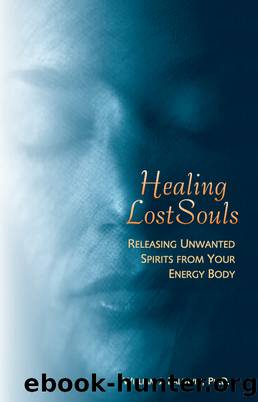Healing Lost Souls by William J. Baldwin

Author:William J. Baldwin
Language: eng
Format: epub
ISBN: 9781612830124
Publisher: Hampton Roads Publishing
â10â
Spiritualism and the American Society
for Psychical Research
Is there life after death? Does the personality survive? Can the spirits of the deceased communicate with living people? The SPR, the Society for Psychical Research, was established in England in 1882 to study these questions. Early work in Spiritualism was conducted with trance mediums, people who have the ability to contact the âspirit worldâ and communicate with the spirits of the deceased. Spiritualism is based on the belief that human personality survives death intact, and communication with the spirits of the deceased is possible.
Spiritualism began in 1848 in Hydesville, New York, when two young women, the Fox sisters, purportedly received spirit communication in the form of knocking sounds.1 News of this âspirit communicationâ spread quickly, and a growing number of people chose to believe these âmessagesâ were from spirits of the deceased. Within two years there were an estimated one hundred âmediumsâ in New York City. Within a decade, there were millions of believers in the U.S. and in Europe. A new religion had emerged on the human stage: Spiritualism.
Apparently a discarnate entity could incorporate into the medium, taking temporary control or âpossession,â and would then speak through the medium's voice. Messages for the living would come from a loved one who had died.
Mediumship is defined as the process of a nonphysical intelligent being, usually a discarnate human, that assumes some degree of control of a living person in order to communicate something meaningful. Mediumship is distinguished from the phenomenon of spirit possession in that it occurs only with the deliberate cooperation of the medium and produces a constructive result. The difference is in purpose, duration, and effect.
American Society for Psychical Research
Dr. James Hyslop (1854â1920) was professor of logic and ethics at Columbia University, New York, from 1889 to 1902. He authored a book on psychology in 1895, and taught the subject at Smith College when the science was in its infancy. The points of connection between psychology and parapsychology were not yet clearly drawn.
The American Society for Psychical Research (ASPR) was formed in Boston in 1885. Hyslop was elected president of the ASPR in 1906. Investigation focused on three subjects: the survival of consciousness; spirit obsession, as it was termed then; and multiple personality disorder.
As president of ASPR, Hyslop explored the problem of distinguishing obsession from multiple personality. More than a theoretician, Dr. Hyslop depended on experience and observation of the phenomena he was studying. After he admitted credibility of the existence of spirits, ten years of investigation were required to convince himself of the possibility of obsession by discarnate beings as a cause of mental illness. In the years that followed, he accumulated the facts that make it scientifically probable.2 He is the pioneer in the systematic investigation of spirit obsession and possession as a cause of mental disorder.
Dr. Carl Wickland was an avowed Spiritualist. Wickland graduated from Durham Medical College in 1900, and nine years later became chief psychiatrist at the National Psychopathic Institute in Chicago. In 1918, he moved
Download
This site does not store any files on its server. We only index and link to content provided by other sites. Please contact the content providers to delete copyright contents if any and email us, we'll remove relevant links or contents immediately.
Rewire Your Anxious Brain by Catherine M. Pittman(18579)
Talking to Strangers by Malcolm Gladwell(13279)
The Art of Thinking Clearly by Rolf Dobelli(10304)
Mindhunter: Inside the FBI's Elite Serial Crime Unit by John E. Douglas & Mark Olshaker(9257)
Becoming Supernatural by Dr. Joe Dispenza(8152)
Change Your Questions, Change Your Life by Marilee Adams(7672)
Nudge - Improving Decisions about Health, Wealth, and Happiness by Thaler Sunstein(7652)
The Road Less Traveled by M. Scott Peck(7548)
The Lost Art of Listening by Michael P. Nichols(7446)
Mastermind: How to Think Like Sherlock Holmes by Maria Konnikova(7271)
Enlightenment Now: The Case for Reason, Science, Humanism, and Progress by Steven Pinker(7268)
Win Bigly by Scott Adams(7127)
The Way of Zen by Alan W. Watts(6543)
Daring Greatly by Brene Brown(6468)
Big Magic: Creative Living Beyond Fear by Elizabeth Gilbert(5670)
Grit by Angela Duckworth(5551)
Ego Is the Enemy by Ryan Holiday(5339)
Men In Love by Nancy Friday(5188)
Altered Sensations by David Pantalony(5069)
